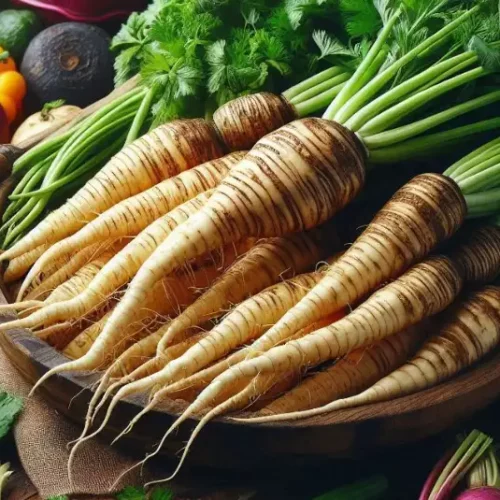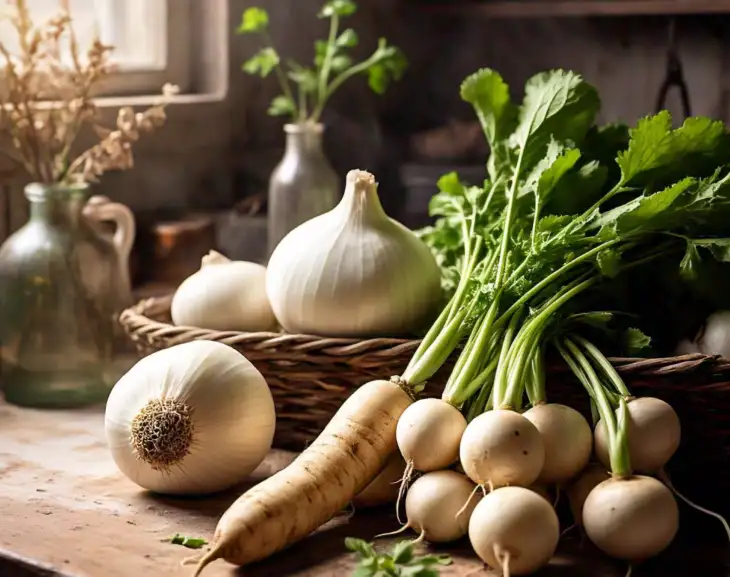Have you ever encountered a white vegetable with a brown, rugged exterior, resembling a scruffy parsnip or an unruly root? It might have left you puzzled. That curiosity is salsify—a vegetable often overlooked because of its unusual look. Yet beneath its rough facade lies a hidden culinary treasure waiting to transform your meals with its unique flavors.
What is Salsify?
Salsify (pronounced “SAL-si-fee”) is a root vegetable that comes in two main varieties:
- White Salsify (“Tragopogon porrifolius”): Pale and hairy, resembling a parsnip.
- Black Salsify (“Scorzonera hispanica”): Darker and smoother.
Often called “goatsbeard” due to its rustic look, salsify has a creamy white flesh that oxidizes and turns brown quickly when exposed to air. Its flavor profile is subtly earthy, akin to artichokes or oysters.
Why Does Salsify Turn Brown?
The browning is a natural reaction caused by oxidation. When the flesh of salsify is cut or peeled, enzymes interact with oxygen, leading to discoloration. To prevent this, place the peeled pieces in acidulated water (water mixed with lemon juice or vinegar) until ready to cook.

How to Cook Salsify
Ingredients
- 4 large salsify roots
- Juice of 1 lemon
- 1 teaspoon black peppercorns
- 1 bay leaf
- 1 –2 tablespoons extra-virgin olive oil
- Kosher salt and freshly ground black pepper to taste
- Chopped parsley or thyme for garnish
Instructions
- Peel the salsify roots and submerge them in a bowl of acidulated water.
- In a shallow pan, combine water, lemon juice, black peppercorns, bay leaf, and a pinch of salt. Bring to a simmer.
- Add the salsify roots and cook until tender (20–30 minutes).
- Let the roots cool slightly, then cut them into 2-inch batons.
- Heat olive oil in a sauté pan over medium heat. Add the salsify pieces, season with salt and pepper, and cook until golden brown.
- Toss with chopped parsley or thyme before serving.
Nutritional Benefits of Salsify
Salsify is not just unique in taste and texture but also offers several nutritional benefits:
- Dietary Fiber: Supports digestive health.
- Vitamin C: Boosts immunity and skin health.
- Potassium: Helps regulate blood pressure.
Other White Vegetables to Explore
If salsify piques your interest, consider trying these white vegetables:
- Parsnips: Sweet and starchy, perfect for roasting or soups.
- Cauliflower: Versatile and packed with fiber.
- Kohlrabi: Crunchy and mildly peppery, great raw or cooked.
- White Pumpkins: Culinary uses range from soups to baked dishes.
- Onions: A staple in countless cuisines worldwide.
Conclusion
Salsify may not be the most common vegetable in the produce aisle, but it’s worth exploring for its distinctive flavor and versatility. Whether you’re roasting it to golden perfection or experimenting with new recipes, salsify adds an element of culinary adventure to your table. Don’t let its rustic appearance fool you—this “ugly duckling” vegetable is a true gem in the kitchen!

